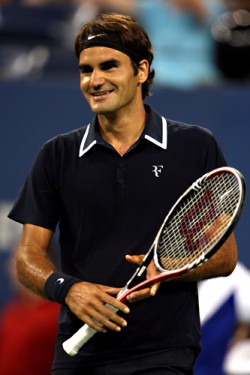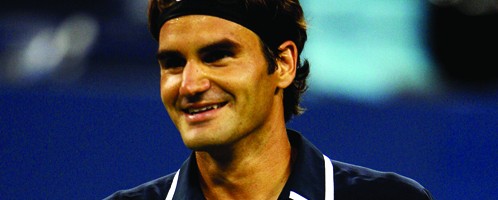On Sunday, the most important match in the history of British tennis took place, though you will probably only hear it mentioned in passing—something to fill the 53 horrible seconds of an otherwise dead-silent elevator ride with co-workers, or as an offhand attempt at civil discourse with a neighbor over the fence. Maybe just a bit of trivia to take in and file away for use down the road. All we can be certain of is that it will be a mildly pressing development for nearly a full news cycle, and then we will move on.
Wimbledon ends
On Sunday, the most important match in the history of British tennis took place, though you will probably only hear it mentioned in passing—something to fill the 53 horrible seconds of an otherwise dead-silent elevator ride with co-workers, or as an offhand attempt at civil discourse with a neighbor over the fence. Maybe just a bit of trivia to take in and file away for use down the road. All we can be certain of is that it will be a mildly pressing development for nearly a full news cycle, and then we will move on.

Such is the fate of the tennis headline in the United States. This is nothing new; the modern consumer can only be pulled in so many directions, and there’s a chain of command at work. What was once a primary American sporting concern has been gradually nudged down the list in the minds of most citizens. By the time tennis catches the attention of the average American sports fan, it is as an addendum.
To say, on the other hand, that the United Kingdom’s interest in tennis is alive and well would be an understatement bordering on negligence. Wild surges of national ecstasy and collective despair based on the results of tennis matches by the locals has become a way of life in the U.K. They host the biggest tournament in the world and care deeply about their place in the history of the sport. Having a home-grown title holder at Wimbledon matters in the U.K., but there hasn’t been a Wimbledon champion in the kingdom since 1936.
This year, the final round matchup between the tournament’s third and fourth seeds couldn’t have been more suspenseful. At stake for Roger Federer: a record-tying seventh Wimbledon title and a shocking recovery of the number one ranking, territory dominated by his younger rivals over the past few years. Across the net was Scottish hopeful Andy Murray, a first-time Wimbledon finalist looking to bag his first major and end a nation’s 76-year Wimbledon drought.
Naturally, by the time the players started warming up there was a near-hysterical tension built up in the stands surrounding Centre Court, clearly discernible even on television. It was a quality completely removed from the usual apprehension and uneasiness that is inherent in any championship match, because the audience seemed moved less by the prospect of a thrilling final than by the dramatic implications of a win for each of the players involved. There’s always something on the line, but never quite like this. The sensation was unmistakable— and it was awkward.
Even after Murray rode a quick start to take the first set, to the delirious approval of an otherwise perfectly polite village mob, it was hard to ignore the relief in the gasps of the crowd when Federer snuck away at the last minute with the second set.
The rest of the match would go on in this way. Fans, both in the stadium and out on the lawns (a television screen of drive-in movie proportions is set up for a reduced price), found themselves wedged painfully between their national obligation to the prospect of a British Wimbledon champ and their devotion to an only recently deposed legend, and one who has become such an important part of the tournament’s identity over the last decade. In the end, they cheered wildly for the Scot and respectfully for the Swiss.
It seemed downright benevolent when after nearly three and a half hours the crowd, along with Murray, were finally put out of their misery. Federer played some of his best tennis in years to rally for the victory in four sets, constructing points with care and ending them with violent abandon. The Scot was overwhelmed in every regard, and afterward, during a torturously long-winded trophy presentation, a shattered and bloodshot Murray propped himself up while Federer tried desperately to pretend he wasn’t floating. By that point, of course, the hollowed-out ticket-holders around Centre Court just wanted it all to be over.
Tennis is not for everyone, but for some people it is everything. And there are times when, for all its genteel conventions and coordinated urbanity, it can be too painful even to watch.




